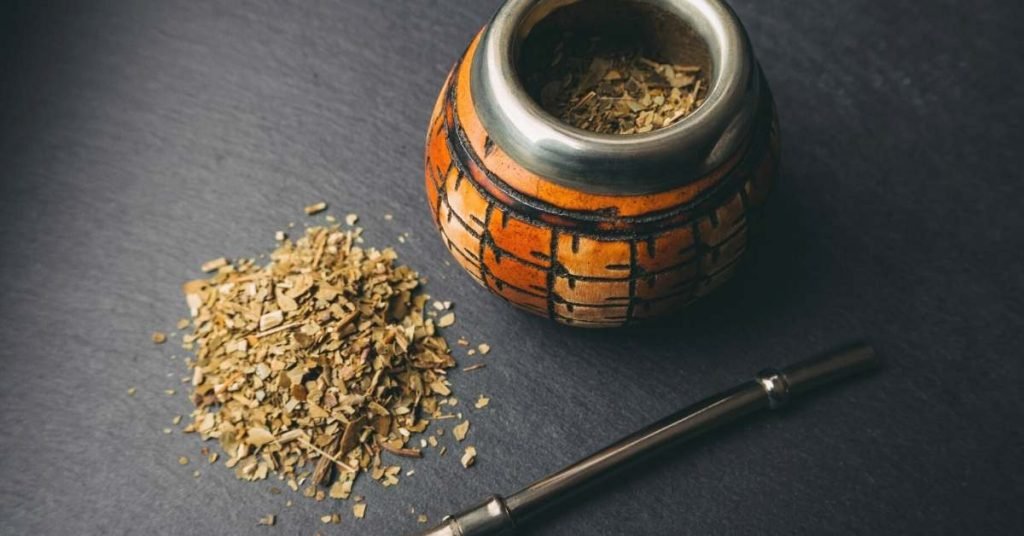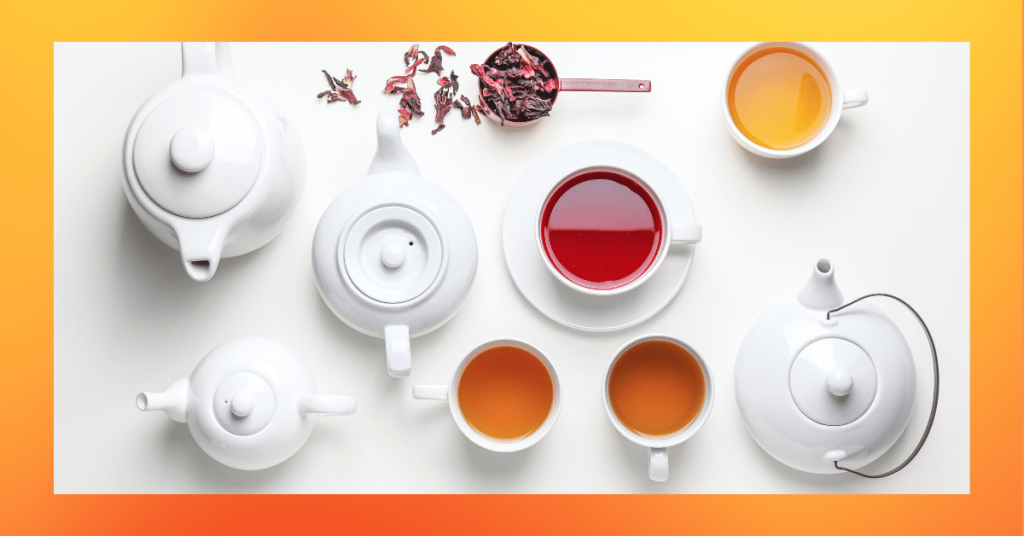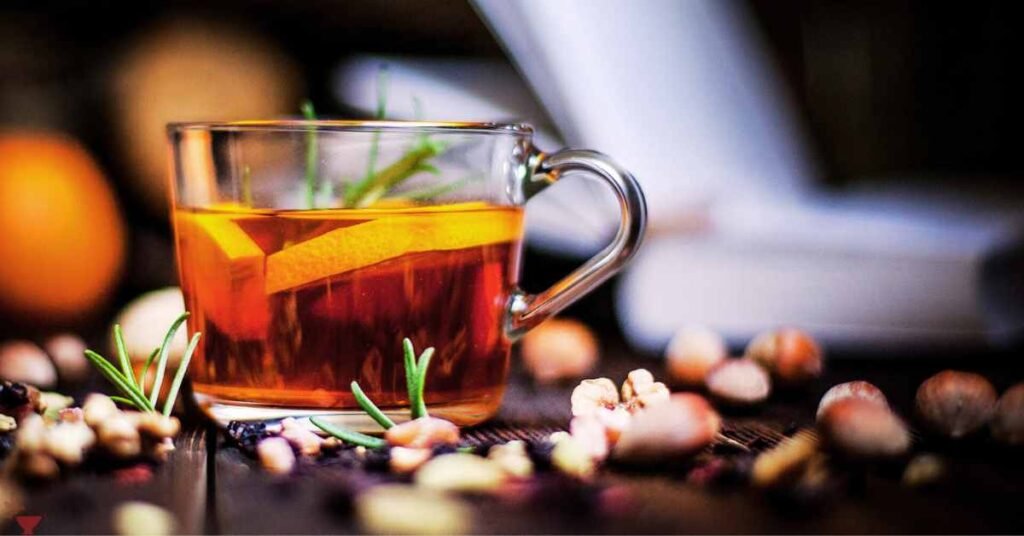How does a South American drink take off like wildfire, becoming a buzzword in tearooms worldwide? It’s not the drink itself that’s catching a craze; it’s the unique way tea drinkers enjoy it and the benefits it delivers that fuel the hot trend of this potent tisane.
What Is Yerba Mate?
Yerba mate tisane (herbal tea) is made from parts of the yerba mate plant (Ilex paraguariensis.) This plant belongs to the holly family and is native to parts of Asia and South America. Most yerba mate plants are cultivated as understory plants in the wild.
Where Did Yerba Mate Come From?
The yerba mate drink is a tea rooted in Paraguay; however, it grows in tropical areas in northern Argentina, south Brazil, Uruguay, Paraguay, and Asia. It has a rich history that adds to the mystique of this tea.
There are several theories on what “yerba mate” translates to. One mentions it got its name from a combination of Spanish and the language of Quechua people (Indian people of Peru, Bolivia, Chile, Colombia, and Ecuador), which translates to “calabash herbs” (calabash is a South American gourd.)
The other theory claims yerba mate got its name from the Guarani Indians. The gourd used by the Guaranis to drink the tea translates to “water” in their language. It was the Quechua people who dubbed “mate” as “cup” in their language.
Likewise, the Aztec people chimed in with their term for “mate” by using a gourd to drink from (known as “hahuatl tecomatl” meaning “solid container.”)
The South American Guarani Indians were the first on record to create a tea from yerba mate. Although the exact time of this occurrence is not known, it is speculated to have happened during the late 15th to early 16th century.
Regardless of the various claims, the tea was termed “yerba mate” by Spanish conquerors who arrived in South America in the 16th century.
By the 1670s, cultivation of the yerba mate plant began, which later came to ruin by the dissolution of the monks who ran them. It wasn’t until the early 1900s that cultivation was up and going again. Today, there are three countries (Argentina, Brazil, and Paraguay) honing in on growing, processing, and exporting yerba mate.
Modern ready-to-drink (such as Guayaki Yerba Mate,) tea bag yerba mate, and fine loose-leaf yerba mate is an integral part of most any tea retail.
How To Drink Yerba Mate – Cultural Traditions

It helps to know a few relative terms used in the yerba mate tea culture.
- Matero – the vessel yerba mate is prepared in and consumed from.
- Bombilla – a tube (straw) with a filter at the bottom that yerba mate drinkers sip the tea through.
- Cocido or Chimarrao – hot brew of yerba mate
- Terere – cold brew of yerba mate
- Cebador – the ceremonial act of sharing yerba mate from one matero with friends or guests.
Customs in the various South American natives depict how yerba mate is prepared and consumed. No matter what tribe or country one belongs to, yerba mate is often shared ceremonially (cebador) among others as an act of hospitality.
Traditional Yerba Mate
There are two traditional ways yerba mate drinkers enjoy their tea, and depending on where someone is from; it may be a hot or cold brew tea.
“Mate Cocido” or “Mate Chimarrao” – Hot Brew
This is the traditional way of consuming yerba mate by South Americans. The tea is prepared (brewed) in a “matero” (calabash gourd or a wooden or porcelain vessel.) Dried tea leaves are placed inside the matero, and hot water is added. The tea inside the matero is steeped for about 5 minutes.
A “bombilla” (tube-like straw) is inserted into the matero. While sipping through the bombilla, the filter at the bottom of the tube filters out the tea leaves/particles.
“Terere” – Cold Brew
Paraguayans and Brazilians prefer yerba mate cold. The tea leaves are placed in the matero, and cold water is added—the tea steeps for a few minutes. Next, the bombilla is inserted. Before drinking the tea, citrus fruit is often added to the tea.
Modern Yerba Mate
While drinking yerba mate from a gourd may offer a rustic, traditional quality to teatime, there are other ways to enjoy this tisane (herbal tea) in a more contemporary fashion. Tea producers process yerba mate in tea bag form to make it more convenient to enjoy. It’s also available as a loose-leaf tisane.
What Does Yerba Mate Taste Like?
Now we get to the meat of the article, where the dying question of what this tisane tastes like. Expectations are usually within the earthy range because it does, after all, come from an herbaceous plant.
Envision all of the attributes of a dense subtropical forest bottled up into a myriad of tastes. The canopy of the thick trees above and the vegetation that carpets the forest floor tickle the palate with an intriguingly earthy, bitter, sweet flavor. The fresh, woody element of the terroir adds a nice finish to every sip.
Not all yerba mate tisanes are going to have the same taste. Terroir (where it’s cultivated) differs because of climate and elevation. Some may be higher in tannins, imparting a bit more bitterness, while others are more toasty.
The way the tea is processed plays a vital role in the taste of the tea as well.
How Is Yerba Mate Processed?
The leaves of the yerba mate plant are harvested during certain months according to where it is cultivated. One country may harvest early spring to late summer, while others may opt for late winter to late summer or summer harvesting.
While there is a basic method used in processing, there may also be minor differences applied to the method because of the region or culture processing it.
Processing Method
- Once the leaves/stems are harvested, they are brought back to a building to be processed.
- To stop oxidation, the leaves/stems are briefly heated. This may be in an oven, open fire or hot air dryer.
- The tea leaves/stems are allowed to cool.
- Next, they go on to be dried in chambers where heat is produced by burning wood. This lasts for up to 24 hours.
- The dried tea leaves/stems are then crushed.
- Now, it’s time for storage for up to a year, where the tea ages and produces its well-known concentrations of phenols.
- Upon coming out of storage, the tea may go through sorting to distribute stems to leaves evenly or be infused with citrus.
- The finished yerba mate goes on to be packaged (tea bags or loose-leaf) and sent to market.
Yerba Mate Caffeine
According to a research article in the Nutrients Journal, a cup of yerba mate yields about 80 mg of caffeine (about the same as a cup of coffee.) Caffeine in yerba mate plants will, of course, vary depending on how it was processed and if the plant is male or female. Female plants have less caffeine.
Is Drinking Yerba Mate Good For You?

The information presented in this article is provided for information purposes only. It is not meant to substitute for medical advice or diagnosis provided by your physician or other medical professionals. Do not use this information to diagnose, treat, or cure any illness or health condition. If you have or suspect that you have a medical problem, contact your physician or healthcare provider.
So, you must decide, based on the information we provide, whether or not yerba mate is safe for you to drink.
What Are The Side Effects Of Yerba Mate?
As outlined in the “Yerba Mate—A Long but Current History” study, yerba mate may present with any of the following.
- Large amounts consumed can cause caffeine jitters, headache, rapid heartbeat, or insomnia.
- Interact with some medications
- May cause miscarriage or low birth weight
- May worsen existing medical conditions.
Many readers wonder, “Does yerba mate make you high?” This is a great question, and although this tea is high in benefits, it will not get you high.
Yerba Mate Benefits
So, what are the benefits of yerba mate? This drink is gaining momentum worldwide as a tisane of choice because of its multitude of benefits. Numerous health benefits that may provide yerba mate drinkers fuel the demand for this tisane.
Antioxidant
Perimenopausal women may experience less oxidative stress in the body and heart disease, high blood pressure, and issues with blood sugar.
Bone Health
May prevent osteoporosis by building up bone density.
Anti-Obesity
A constituent called methylxanthine may optimize metabolism, so the body expends energy better with more oxidation of fat cells. Other constituents help prolong the stomach emptying, causing fullness that lasts longer.
Anti-Inflammatory
Phenols in yerba mate may act on inflammatory processes associated with chronic inflammatory conditions such as arthritis, obesity, inflammatory bowel disease, and more.
Anti-Bacterial
Yerba mate contains agents that may act against numerous bacterial (gram-negative and positive) strains.
Anti-Diabetic
The effects of yerba mate’s antioxidant and antiglycation may act as a preventative for diabetes.
Anti-Cholesterol
Yerba mate may help to block/inhibit the absorption of cholesterol in the small intestine and liver synthesis because of its saponins, phenols, and caffeine.
Cardio Health
Yerba mate may help to prevent heart disease.
How To Make Yerba Mate
You, too, can experience the amazing goodness that a cup of yerba mate delivers. Whether you decide to try it traditional-style or drop an infuser full of loose-leaf tea into a teacup, the delicious benefits are far too great to pass up!
Cocido (hot)
Things You’ll Need:
- 2 teaspoons of loose-leaf yerba mate tea
- 1 cup of water
- Tea kettle
- Bombilla
- Matero (gourd or other vessel)
Directions
- Heat the water to about 165 degrees (F.)
- Place the loose-leaf yerba mate into the matero.
- Pour the hot water into the matero.
- Allow the tea to steep for 5 minutes.
- Insert the bombilla.
- Slowly sip and enjoy!
Terrere (cold)
Things You’ll Need:
- 2 teaspoons of loose-leaf yerba mate tea
- 1 cup of water
- Tea kettle
- Bombilla
- Matero (gourd or other vessel)
Directions
- Place the loose-leaf yerba mate into the matero.
- Pour the hot water into the matero.
- Allow the tea to steep for 5 minutes.
- Insert the bombilla.
- Slowly sip and enjoy!
Modern Method
Things You’ll Need:
- 2 teaspoons of loose-leaf yerba mate tea
- 1 cup of water
- Tea kettle
- Teacup
- Tea infuser
Directions
- Heat the water to 165 degrees (F.)
- Place the loose-leaf tea into a tea infuser and drop it into a teapot.
- Pour the hot water into the teapot.
- Allow the tea to steep for 5 minutes.
- Remove the tea infuser.
- Pour the tea into a teacup and enjoy.
“Mate” Does Matt-er In The Tea World
No matter where you are in your tea journey or looking for a tisane (herbal tea) to enjoy for its benefits, yerba mate is one of the world’s top choice tisanes. Many tea drinkers know the value of this lovely tea, making it a part of their daily life. You may find it’s something you’ll come to love and regularly enjoy too.
After all, “It’s Never Not Teatime!”
Your cup of yerba mate is only a click away. Get yours today!
Medical Disclaimer
Itsnevernotteatime.com cannot and does not contain medical/health advice. The medical/health information is provided for general and educational purposes only and is not a substitute for professional advice.
Statements made on this website regarding the herbal and natural products offered on this website have not been evaluated by the food and drug administration as the FDA does not evaluate or test herbs. This information has not been evaluated by the US Food and Drug Administration, nor has it gone through the rigorous double-blind studies required before a particular product can be deemed truly beneficial or potentially dangerous and prescribed in the treatment of any condition or disease.
It is not meant to substitute for medical advice or diagnosis provided by your physician or other medical professionals. Do not use this information to diagnose, treat or cure any illness or health condition.
Accordingly, before taking any actions based upon such information, we encourage you to consult with the appropriate professionals. We do not provide any kind of medical/health advice. The use or reliance of any information contained on this site is solely at your own risk.
Please visit this FDA website to clear any confusions you have about food and dietary products and their ingredients:
Please visit this FDA website to clear any confusions you have about food and dietary products and their ingredients: https://www.fda.gov/Food/DietarySupplements/default.htm




